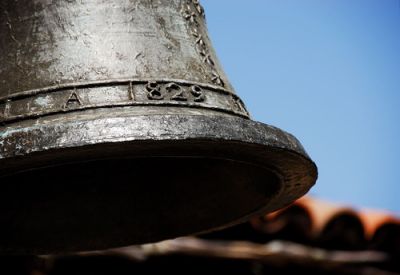 Some unnamed Associated Press reporter in Oregon did a phenomenal job of working the phone to pull together a rather comprehensive survey of churches in the Beaver State that have or peal bells.
The reporter managed to find a bunch of examples across Christian denominations from the larger Klamath Falls area, and spoke with laity and clergy about the existence and status of their belltowers. And this is notable considering that Oregon is one of the two least religious states in the union:
Some unnamed Associated Press reporter in Oregon did a phenomenal job of working the phone to pull together a rather comprehensive survey of churches in the Beaver State that have or peal bells.
The reporter managed to find a bunch of examples across Christian denominations from the larger Klamath Falls area, and spoke with laity and clergy about the existence and status of their belltowers. And this is notable considering that Oregon is one of the two least religious states in the union:
For generations, church bells here have called worshippers to service, joyfully announced weddings, noted the noonhour or pealed in sadness at a death. But they're largely silent these days.
. . . Sacred Heart Catholic Church has two in its 100-foot tower to let the faithful know it's time for Mass . . . sometimes.
. . . Klamath Lutheran, according to member Barbara Mann, stopped ringing its chimes after a complaint from a neighbor who worked nights.
The carillon at First Presbyterian Church hasn't worked for a year.
In its early days the bell at the United Methodist Church was in the church tower of the building taken down in 1926.
St. Patrick's Catholic Church in Lakeview has a bell but uses it rarely.
The Tulelake Community Presbyterian Church has one but uses it just to mark the noonhour.
I love the idea for the story, and reading it brought back all sorts of memories from my childhood church in central California. Bells were rung to notify farmers of the impending services and to notify the community when there was a death. I remember my friends pausing from our playtime to count the age of the deceased – one peal per year. And because of this story, I thought about the changing role and nature of church bells. We still chime bells at my church to mark the beginning and end of services.
It was a good thing I was able to reminisce about my experiences and reflect on the larger spiritual issues at play, because the reporter rather glossed over those issues.
At the end, particularly after some confusing analysis from church-bell manufacturers and salespeople in Ohio, I was left asking, "So what?" The story managed to be one of the least religious stories about a religious issue I've read. The article showed a lot of promise, but I was left wondering what the demise of the bells meant. The reporter made some light claims about traditional vs. Baby Boomer-style worhsip. That's a start.
But what about the tendency among Americans to worship in a consumer-oriented fashion? What about what this means for neighborhood churches?
In the farming community where I grew up, the bells served a vital purpose – at least into the 1980s when I left. They notified folks within walking distance that church was about to start. They distributed news about death in a very effective fashion. Now, I worship in a different town than where I live. Many of my fellow congregants drive much further than I do to get there. Relatively few of our parishioners can now afford to live within walking distance of the church. Does the bells' demise mirror these sociological and theological shifts? Perhaps reporters could investigate those issues in more detail.
Photo via Madhu on Flickr.
